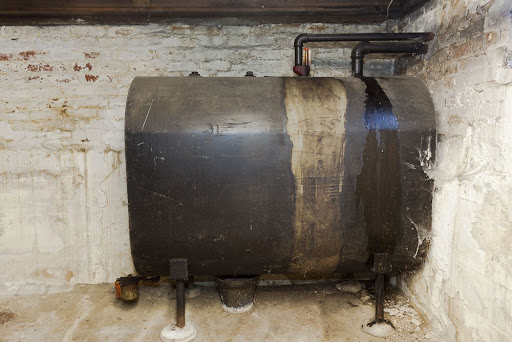Many homeowners throughout the United States rely on home heating oil to keep them warm during cold weather. Heating oil systems consist of an oil tank, typically installed outside of the property, a furnace, and piping that distributes the heat. If you have a large fuel oil tank near your home that requires replacing, or if you are switching to a different type of fuel tank, it’s important to understand oil tank removals and what to expect from the process.

Some homeowners don’t like the appearance of large aboveground tanks, while others have outdated models that are no longer in compliance with local heating oil tank regulations. Whatever the reason for an oil tank removal may be, the process requires professional attention and care to ensure safety and reliable performance in the future.
Removing Underground Fuel Tanks
Older homes that use home heating oil systems often have fuel tanks that are buried underground. While this type of installation generally provides a less obtrusive appearance, buried oil tanks come with a handful of risks. Over time, even the most well-made models will rust and corrode. This could allow oil to leak into the surrounding earth, causing ecological and health problems in the area.
Many homeowners are removing their buried oil tanks and replacing outdated aboveground tanks to ensure safety and energy efficiency. The cost to move an oil tank depends on its size, whether excavation is necessary, and the type of tank you’ll be replacing it with. The removal process typically requires shutting off the home heating system until the new tank is safely installed, so it’s important to schedule this type of work carefully.
Replacing a Home Heating Oil Tank
It’s not uncommon for homeowners with older properties to replace underground fuel tanks with more efficient models built for interior installation. When choosing a new oil tank, it’s generally best to strive for an indoor option that will ensure your oil supply is protected from the elements.
Alternatively, you might not want to replace your existing oil tank with the same type of heating system. It’s a good idea to have home heating oil experts inspect your current home heating configuration to help you determine if a different option would be effective for your property, such as natural gas. Each type of heating fuel offers different benefits, and some are better suited for certain properties than others. Review these differences carefully to determine which choice would work best for you.
If you have concerns about energy efficiency and fuel consumption, your heating technician can provide an oil tank size chart that easily breaks down the benefits of all the different fuel oil tanks you could have installed on your property. An oil tank chart can clarify the benefits of different fuel types and show you your options regarding oil tank dimensions. For example, if you plan on arranging an interior installation, you need a fuel oil tank that will fit inside your home.
Switching to a New Fuel Source
If you decide to switch to a new type of home heating fuel following your old oil tank removal, you should know the benefits that some fuel types offer over others. For example, propane burns very cleanly but tends to be more expensive than natural gas or heating oil. Natural gas is widely available in densely populated areas, but it’s harder to configure in some rural locations.
Heating oil and natural gas tend to offer similar value per gallon, but heating oil is somewhat more flexible. Many natural gas users are locked into single service providers with no options to change if they do not like their services. By comparison, there are hundreds of heating oil dealers all over the country that can supply fuel at competitive prices. It’s also possible to purchase home heating oil during the off-season to stock up before prices surge in the winter.
Prices for natural gas and heating oil are currently comparable, but they can fluctuate over time. Natural gas offers the best balance of performance, efficiency, and affordability where it’s available. Still, when it comes to the choice between heating oil and propane, it’s generally more cost-effective to choose heating oil. If you decide to go with oil, it’s vital to choose a home heating oil dealer that offers flexible, competitive pricing and ensures professional installation for any new fuel oil tank.
Additional Considerations for Home Heating Oil Options
Some property owners may wish to have more customized home heating oil configurations. For example, it’s possible to have both heating oil and propane on the same property. Some homeowners will have heating oil tanks installed to provide heat to the home and fuel appliances along with a dedicated propane line for a stove or gas fireplace.
No matter what type of fuel oil tank you have installed, it’s important to remember that you should never replace a buried fuel oil tank with another underground tank. These installations pose problems for homeowners, and you could face expensive repair and replacement costs down the road. Additionally, if you ever decide to sell your property, the buried fuel tank will likely be an unattractive feature for potential buyers.
Ultimately, there are several options for replacing or reconfiguring your home’s fuel oil system. Before you schedule your service, be sure to consider the potential future costs of the fuel you’ve selected and the maintenance requirements for the hardware installed on your property. Professional excavation and oil tank removal services are also necessary for a safe upgrade to your home’s heating system.
Purchasing a new fuel oil tank for your home now can mean years of reliable, affordable, and safe performance when you choose the right team for installation and repair. If you’re ready to make this investment in your home’s value, weigh your fuel options carefully and start thinking about where you could have your new fuel tank installed.

